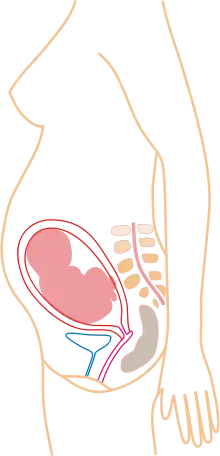How are babies made?
In humans there are two sexes: Men and Women. Babies are made when a cell called a sperm (produced by men) get together with an egg cell or ovum (produced by women) in a process called fertilization. When the cells combine, they form a new cell, called a zygote (zy rhymes with eye; gote sounds like goat) which has all it needs to make a new man or woman. The zygote will make a baby like his mother and father.
Where do babies come from?

Babies come from their mother. To make a baby, the father must put his sperm into the mother's body. This is called having sex. The man puts his penis into the woman's vagina and the sperm cells swim into the mother's body. Fertilization happens in the mother. The new zygote grows into a ball called a morula which will stick to the mother's womb. This ball grows into a blastula which later develops into a baby.
Nine months later (266 days after fertilization) a new baby will come out of the mother's vagina in a process called birth.
Words
cell - Things that are alive are made of little boxes called cells.
womb - The place in a body where a baby grows.
zygote - The one cell made from a sperm cell and an egg cell that will grow into a person.
sperm - A sex cell made by a man.
egg - A sex cell made by a woman.
fertilization - When sperm and egg get together and make a zygote.